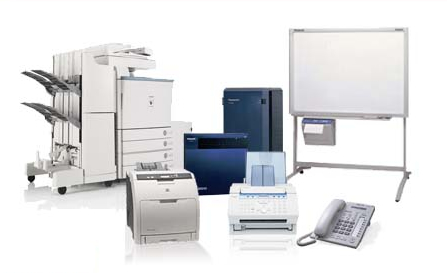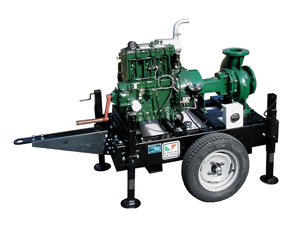
There are a number of changes to Family Tax Benefit starting from 1 July 2015. These include: 
•Large Family Supplement will be paid to families receiving Family Tax Benefit Part A for 4 or more children;
•Family Tax Benefit Part B primary earner’s income limit will be $100,000. Families where the higher income earner earns $100,000 or less will continue to receive Family Tax Benefit Part B; and
•The higher income test free area for Family Tax Benefit Part A will remain at $94,316 — the additional amount for the second child or subsequent children will not apply. This means that families with more than 1 child will not receive an add on amount per child.
There is nothing you have to do. If you are affected by the changes, your payment will change automatically from 1 July 2015.
You need to be eligible for Family Tax Benefit Part A to receive some other payments and services, such as Extended Medicare Safety Net Concessional and Family Tax Benefit Part A threshold and the Child Dental Benefits Schedule. If the above changes mean that you are no longer eligible for Family Tax Benefit Part A, you may no longer be eligible for some other payments and services.
2014-2015 FAMILY PAYMENTS
At the start of each financial year, CentreLink asks you to estimate your family income. This is so they can work out how much Family Tax Benefit or Child Care Benefit to pay you.
At the end of the financial year, they balance your family assistance payments. This means they compare the amount of Family Tax Benefit and Child Care Benefit for approved care they paid you, (based on the estimate you gave them), against the amount you are entitled to receive (based on your actual family income for that financial year). 
You and your partner must lodge your 2014–2015 tax returns with the ATO, or tell CentreLink if you don’t need to lodge a tax return, by 30 June 2016. This will ensure you receive your full 2014–2015 family payment entitlements, including supplements.
The Family Tax Benefit balancing process can commence as soon as:
•CentreLink receives both you and your partner's actual income details from the ATO, or you tell CentreLink that either you or your partner don’t need to lodge a tax return;
•You receive your last Family Tax Benefit payment for the financial year—this will be some time in the first 2 weeks of July 2015 (depending upon your payment cycle); and
•CentreLink have received information about child support, if relevant.
The Child Care Benefit and Child Care Rebate balancing process will commence at the end of July 2015. This is to ensure that all attendance information has been submitted by your child care providers.
If you have chosen to receive Child Care Rebate only, your payments will be balanced automatically without you or your partner having to lodge a tax return.
ACCELERATED DEPRECIATION FOR SMALL BUSINESS 
The government announced that it will provide small businesses with an immediate tax deduction for every asset they buy costing under $20,000. Small businesses can apply this $20,000 rule to as many individual items as they like. This will temporarily replace the previous instant asset write-off threshold of $1,000. This measure starts 12 May 2015 and will end on 30 June 2017.
Any assets over $20,000 can be added together (‘pooled’) and depreciated at the same rate. These assets are depreciated at 15 per cent in the first income year, and 30 per cent per year thereafter. If the value of the pool is below $20,000 at the end of an income year that ends on or after 12 May 2015 and on or before 30 June 2017 (including existing general small business pool) it can be immediately deducted too.
All depreciating assets (including new and second hand) are eligible, except for a small number of exclusions which receive different depreciation treatment. Assets excluded from these depreciation rules include:
Businesses need to ensure that they only claim a deduction in the year in which the asset is first used or installed ready for use and to the extent to which the asset is used in an income earning activity for a taxable purpose.
To ensure fairness and maximum eligibility for the increased simplified depreciation thresholds, as a once off, the current 'lock out' laws will be suspended for the simplified depreciation rules (these prevent small businesses from re-entering the simplified depreciation regime for five years if they have opted out) until the end of 30 June 2017.
ACCELERATED DEPRECIATION FOR PRIMARY PRODUCERS 
The new laws include changes to allow primary producers to claim an immediate deduction for capital expenditure on water facilities and fencing assets (such as dams, tanks, bores, irrigation channels, pumps, water towers and windmills) and to deduct capital expenditure on fodder storage assets over three years. The measure applies to assets that an entity starts to hold or to expenditure an entity incurs at or after 12 May 2015.
SMALL BUSINESS TAX CUT
It is proposed that companies that are small business entities with an aggregated turnover of less than $2 million will have their corporate tax rate cut from 30 per cent to 28.5 per cent from 1 July 2015. The corporate tax rate for companies that have an aggregated turnover of $2 million or more remains at 30 per cent.
Unincorporated small businesses (sole traders, partnerships or trusts) with an annual turnover less than $2 million will also benefit from a 5 per cent tax discount, on the income tax payable on business income received from an unincorporated entity that meets the small business entity (SBE) test, capped to $1,000 per individual in an income year.
START-UPS
Start‑ups will be allowed to immediately deduct professional expenses incurred when they start a small business, such as legal expenses on establishing a company, trust or partnership; rather than writing them off over five years. This will provide immediate cash flow benefits for small business.
NEW CHILD CARE SUBSIDY 
Families will be able to access a single Child Care Subsidy from 1 July 2017 based on family income. The subsidy will assist low-income families earning around $65,000 or less with 85% of their child care fees, up to an hourly cap. There will be no annual cap for families earning around $185,000 or less.
A family with both parents working 8 hours a fortnight each can have up to 36 hours of subsidised child care; families who work longer hours can have more child care hours subsidised. Volunteering, paid work and study all counts. The Child Care Subsidy will subsidise 24 hours of child care a fortnight for low-income families with a parent who doesn’t work.
CHILDHOOD IMMUNISATIONS
The Government’s ‘No Jab, No Pay’ rule means that families who choose not to vaccinate their children will not be able to receive child care payments or the Family Tax Benefit Part A end of year supplement. This starts on 1 January 2016.
ACCELERATED DEPRECIATION FOR SMALL BUSINESS 
The government announced that it will provide small businesses with an immediate tax deduction for every asset they buy costing under $20,000. Small businesses can apply this $20,000 rule to as many individual items as they like. This will temporarily replace the previous instant asset write-off threshold of $1,000. This measure starts 12 May 2015 and will end on 30 June 2017.
Any assets over $20,000 can be added together (‘pooled’) and depreciated at the same rate. These assets are depreciated at 15 per cent in the first income year, and 30 per cent per year thereafter. If the value of the pool is below $20,000 at the end of an income year that ends on or after 12 May 2015 and on or before 30 June 2017 (including existing general small business pool) it can be immediately deducted too.
All depreciating assets (including new and second hand) are eligible, except for a small number of exclusions which receive different depreciation treatment. Assets excluded from these depreciation rules include:
Businesses need to ensure that they only claim a deduction in the year in which the asset is first used or installed ready for use and to the extent to which the asset is used in an income earning activity for a taxable purpose.
To ensure fairness and maximum eligibility for the increased simplified depreciation thresholds, as a once off, the current 'lock out' laws will be suspended for the simplified depreciation rules (these prevent small businesses from re-entering the simplified depreciation regime for five years if they have opted out) until the end of 30 June 2017.
ACCELERATED DEPRECIATION FOR PRIMARY PRODUCERS 
The new laws include changes to allow primary producers to claim an immediate deduction for capital expenditure on water facilities and fencing assets (such as dams, tanks, bores, irrigation channels, pumps, water towers and windmills) and to deduct capital expenditure on fodder storage assets over three years. The measure applies to assets that an entity starts to hold or to expenditure an entity incurs at or after 12 May 2015.
SMALL BUSINESS TAX CUT
It is proposed that companies that are small business entities with an aggregated turnover of less than $2 million will have their corporate tax rate cut from 30 per cent to 28.5 per cent from 1 July 2015. The corporate tax rate for companies that have an aggregated turnover of $2 million or more remains at 30 per cent.
Unincorporated small businesses (sole traders, partnerships or trusts) with an annual turnover less than $2 million will also benefit from a 5 per cent tax discount, on the income tax payable on business income received from an unincorporated entity that meets the small business entity (SBE) test, capped to $1,000 per individual in an income year.
START-UPS
Start‑ups will be allowed to immediately deduct professional expenses incurred when they start a small business, such as legal expenses on establishing a company, trust or partnership; rather than writing them off over five years. This will provide immediate cash flow benefits for small business.
NEW CHILD CARE SUBSIDY 
Families will be able to access a single Child Care Subsidy from 1 July 2017 based on family income. The subsidy will assist low-income families earning around $65,000 or less with 85% of their child care fees, up to an hourly cap. There will be no annual cap for families earning around $185,000 or less.
A family with both parents working 8 hours a fortnight each can have up to 36 hours of subsidised child care; families who work longer hours can have more child care hours subsidised. Volunteering, paid work and study all counts. The Child Care Subsidy will subsidise 24 hours of child care a fortnight for low-income families with a parent who doesn’t work.
CHILDHOOD IMMUNISATIONS
The Government’s ‘No Jab, No Pay’ rule means that families who choose not to vaccinate their children will not be able to receive child care payments or the Family Tax Benefit Part A end of year supplement. This starts on 1 January 2016.
SuperStream is the new way for employers to make super contributions electronically. This applies to businesses depending on how many employees you have:
• 20 plus employees: you have until 30 June 2015 to be SuperStream compliant; and 
• 19 and less employees: the start date is 1 July 2015 but you have until 30 June 2016 as long you are making a genuine attempt to prepare for SuperStream.
All employers need to adopt SuperStream. Many employers are able to continue using their current electronic channels with only minor tweaking and still be compliant with the new standard. There are many options available for employers to adopt SuperStream. This may include upgrading their current payroll software, using a clearing house service or their default super fund’s portal. Any employer who has not yet started to prepare needs to act now.
The ATO has provided a step-by-step checklist to help employers prepare at ato.gov.au/SuperStreamChecklist.
SMSF
All SMSF trustees must be able to receive super contribution payments and information sent using SuperStream when their employer starts using SuperStream. To be able to do this, each SMSF member will need to provide the SMSF’s ABN, bank account and electronic service address (ESA) to their employer.
If you haven’t finalised your SuperStream preparations, you need to do the following:
Once you have all of this information, each member of your SMSF will need to provide it to their employer. You should contact your employer about when they plan to make their first SuperStream contribution and make sure you provide your SMSF’s ABN, ESA and bank account details at least 30 days beforehand.
Receive FREE information and advice on Accounting & Taxation every Quarter
Signup